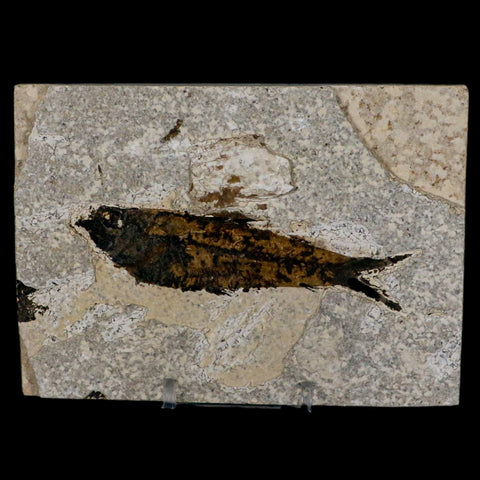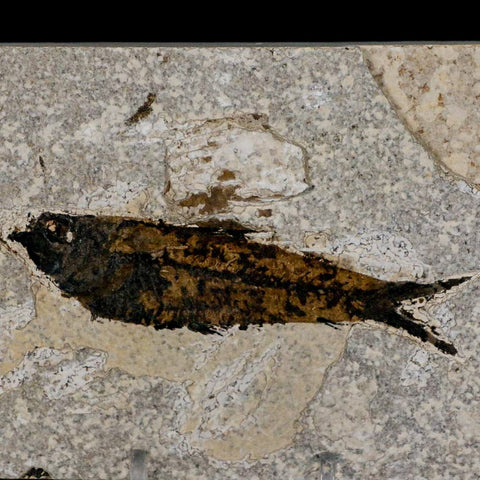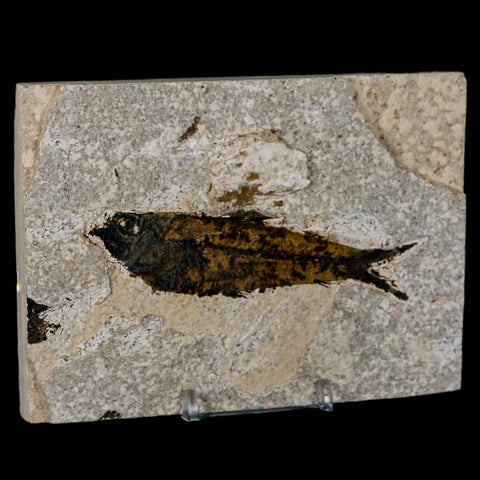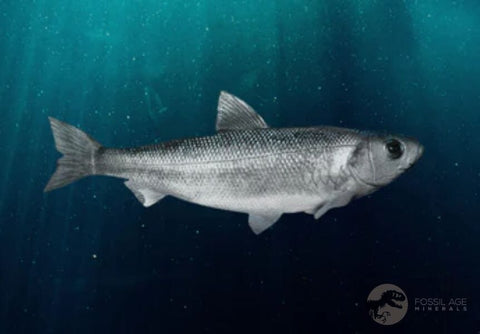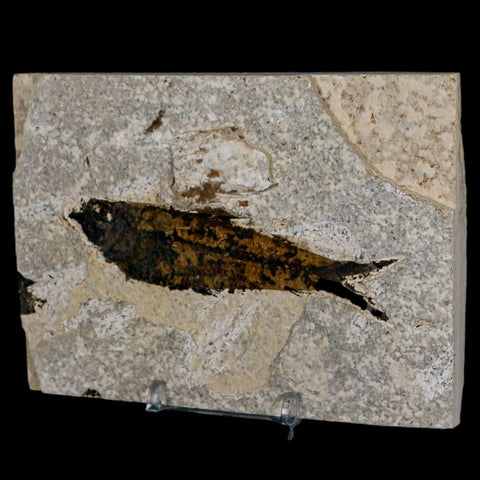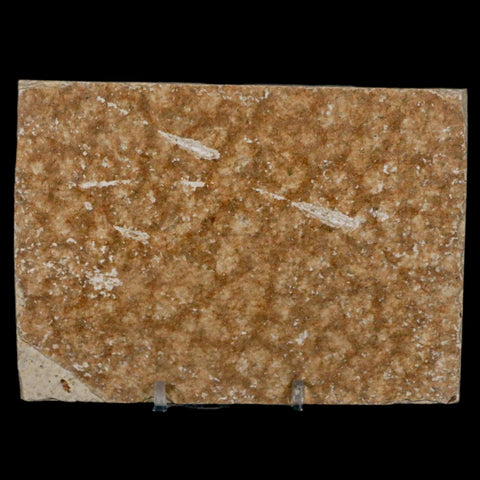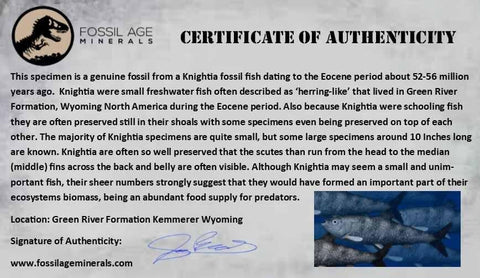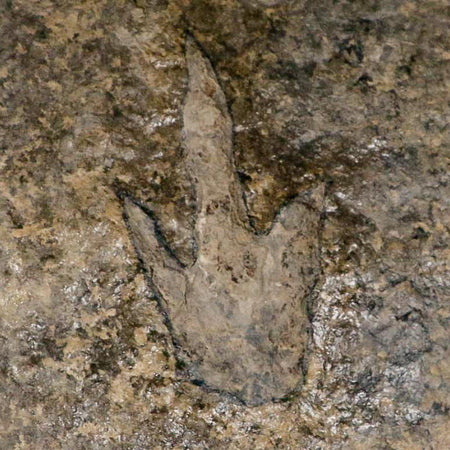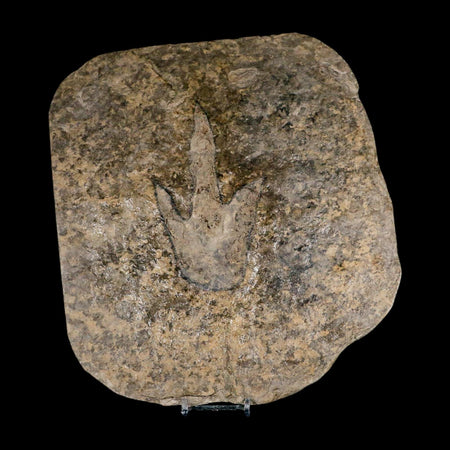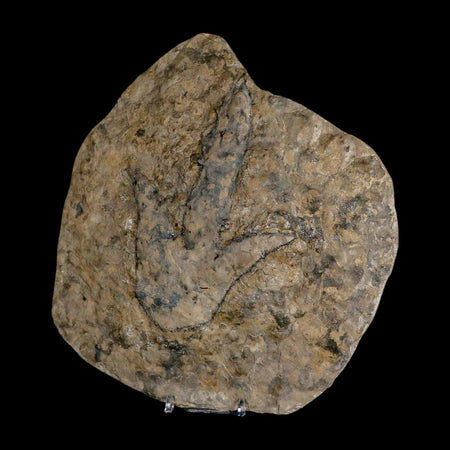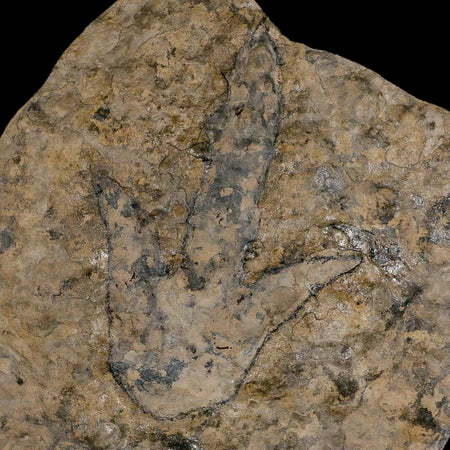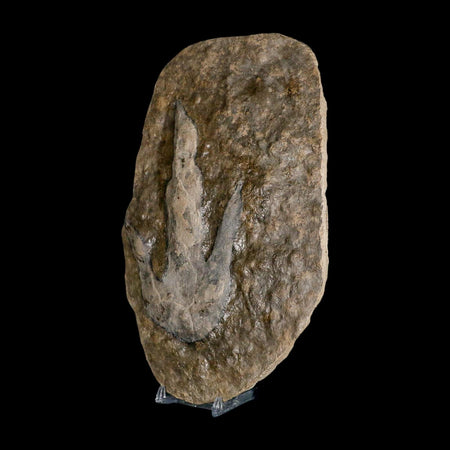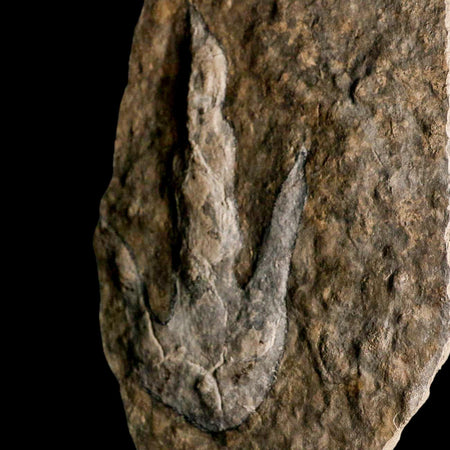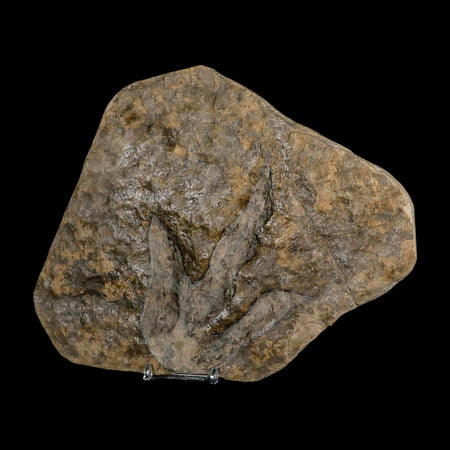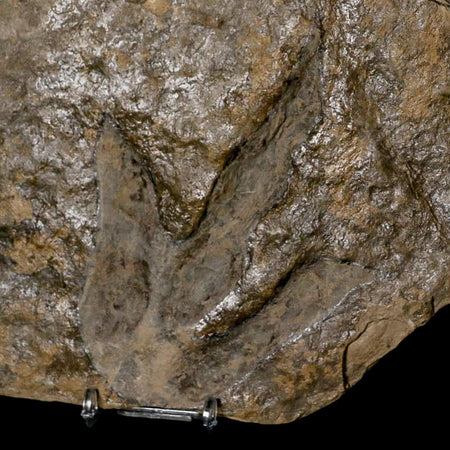3.8" Knightia Eocaena Fossil Fish Green River FM Wyoming Eocene Age COA & Stand
Location: Kemmerer, Wyoming
Weight: 12.1 Ounces
Dimensions: 5.1 Inches Long, 3.6 Inches Wide, 0.5 Inches Thick (Plate)
Fish Dimensions: 3.8 Inches Long, 0.9 Inches Wide
Comes with a Certificate of Authenticity.
Comes with a Free Stand.
The item pictured is the one you will receive.
This is a genuine fossil.
50 million years old, Eocene age
Knightia Eocaena is the most common fish in Fossil Lake and may be the most commonly articulated vertebrate fossil in the world. It is Wyoming's State Fossil. Length: up to 25 cm (10 in).
Around 50 million years ago, during the Eocene Epoch, a vast freshwater body known as Fossil Lake stretched across what is now southwest Wyoming. At its peak, the lake covered nearly 930 square miles, though today only about 500 square miles of sediment remain. The central 230-square-mile fossil bed is especially significant, containing exceptionally fossil-rich sediments along with preserved deltas, beaches, mineral springs, and nearshore rock formations that reveal the lake’s ancient environment.
The unique chemistry of Fossil Lake prevented decay and scavenging, allowing even delicate organisms to fossilize. Over time, millimeter-thick layers of limestone built up slowly, forming laminated deposits that preserve the highest concentration of fossil fish in the world. Along with these fish, other aquatic organisms and geological features make Fossil Lake the most complete Paleogene record of a freshwater lake ecosystem anywhere on Earth.
Since the discovery in the 1870s, many perfectly preserved fossil fish have been recovered. Preserved within the fish in the laminated limestone is a complete aquatic ecosystem, comprising cyanobacteria, plants, insects, crustaceans (such as shrimp, crawfish, and ostracods), amphibians (including a primitive salamander and a frog), alligators, turtles, birds, and mammals, including the oldest known pantolestid (an otter-like animal). The subtropical terrestrial ecosystem surrounding the lake is also represented by rare fossils, including a horse, two snakes, lizards, two bat species, birds, an apatemyid (an arboreal insectivore), a miacod (a primitive carnivore), insects, and more than 325 types of leaves, seeds, and flowers.



